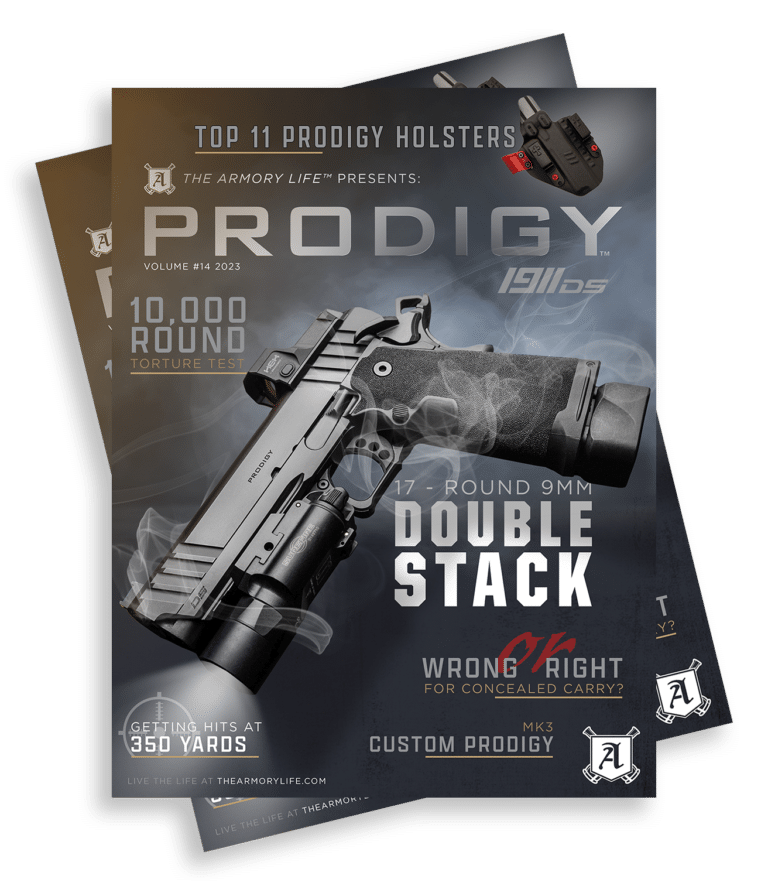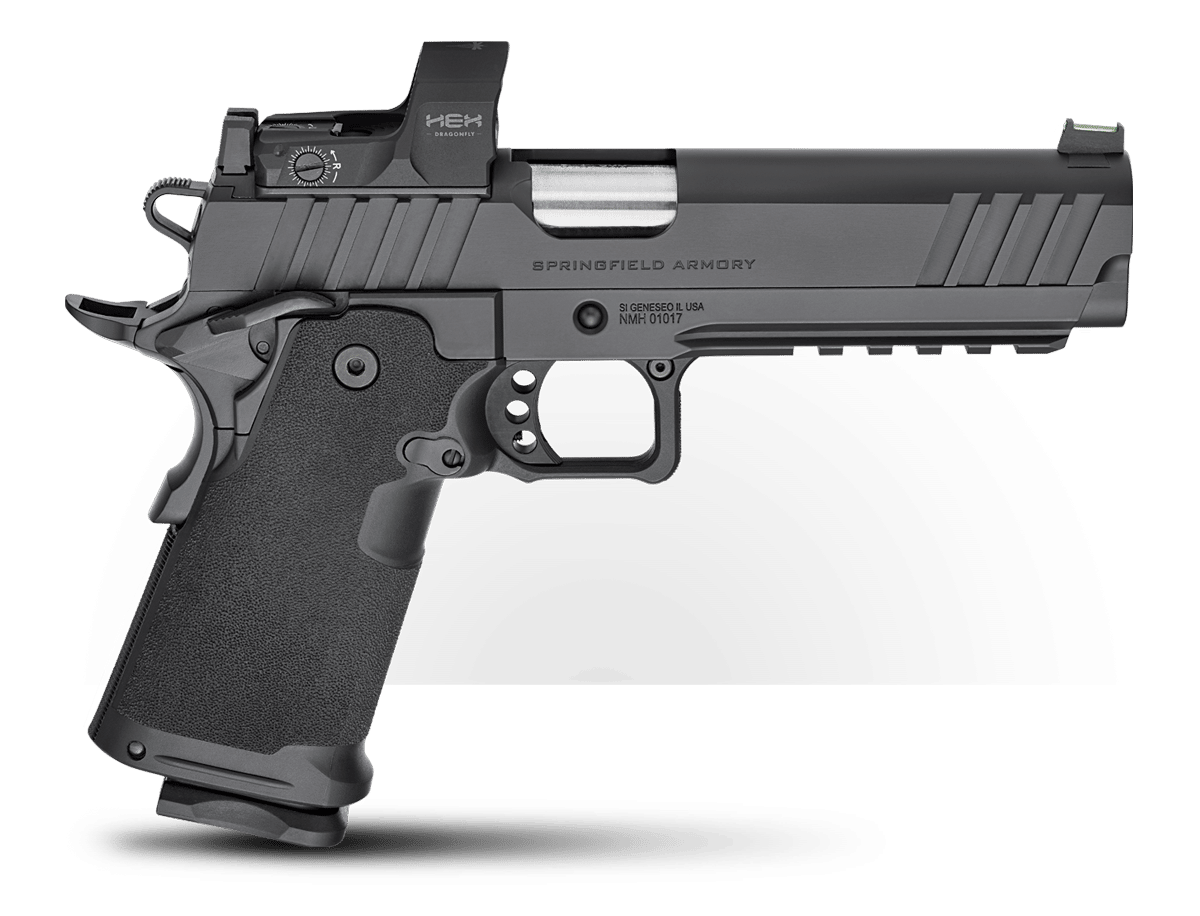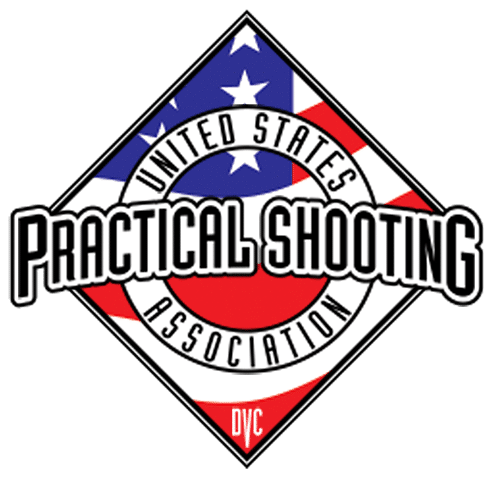Ayoob: The Prodigy in Competition
September 10th, 2023
5 minute read
A recent piece of mine on the Prodigy focused on its impressive capacity and its usefulness for home defense (see the full article here). This time let’s look at its use in competition.
In NRA handgun competition, those generous magazines are wasted. In Precision Pistol, colloquially known as bullseye, only five rounds per string are loaded. You’re limited to six rounds in the gun in PPC, the Practical Police Course, and only fire six rounds per string in Action Pistol events such as the famous Bianchi Cup.
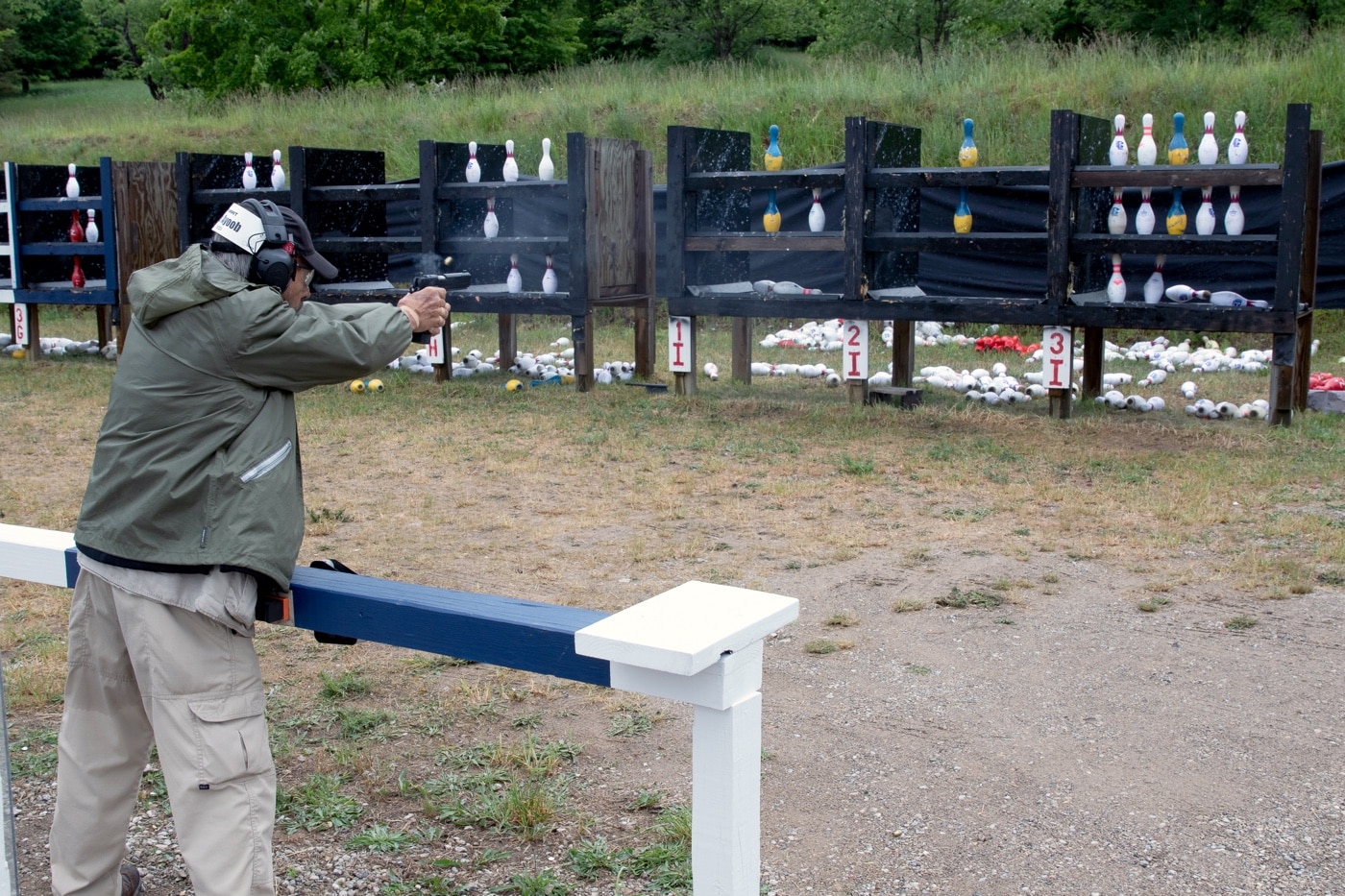
For the Precision games, the Springfield Armory catalog has many options for you. I would point out that the Prodigy is a gun built for ammo volume. But, it is certainly accurate enough — and indeed, perhaps ideal — for competition in the United States Practical Shooting Association (USPSA), where its capacity is not only allowed but hugely advantageous. It’s also perfectly suitable for International Defensive Pistol Association (IDPA) matches, the concealed carry sport.
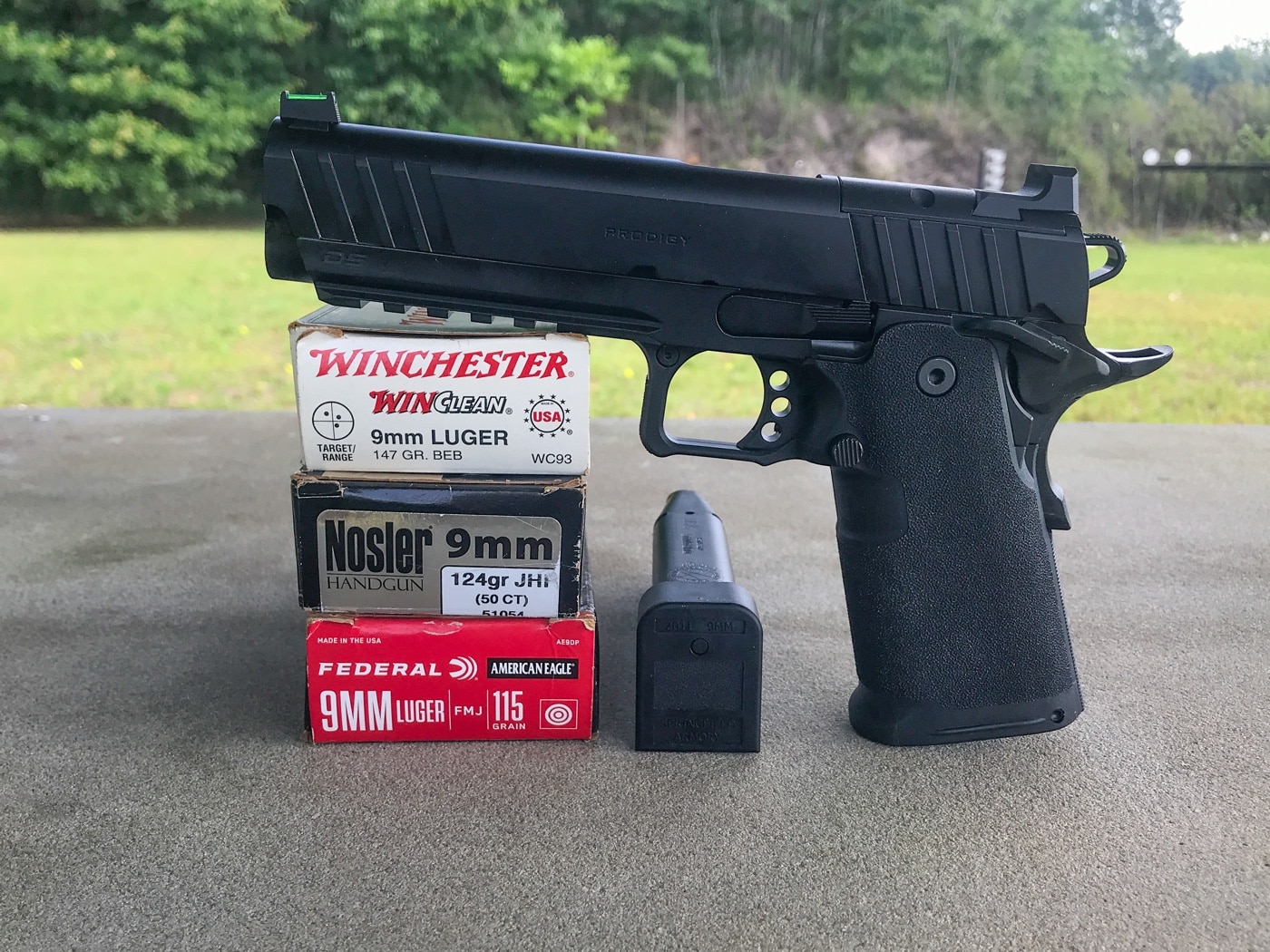
However, I was curious what sort of accuracy I could wring out of it at the bench. Testing for accuracy with the 1911 DS Prodigy was done on a Caldwell Matrix rest on a concrete bench at 25 yards. Each group was measured twice center to center between the farthest hits, to the nearest 0.05”. The first measurement was of all five shots to get a good idea of what a veteran handgunner could expect under perfect conditions; the second measurement was the best three shots in the group. Comparison testing and experience have shown me that this “best three” will generally approximate what the shooter could have expected from all five with a Ransom machine rest, which is something most of our readers don’t have access to.
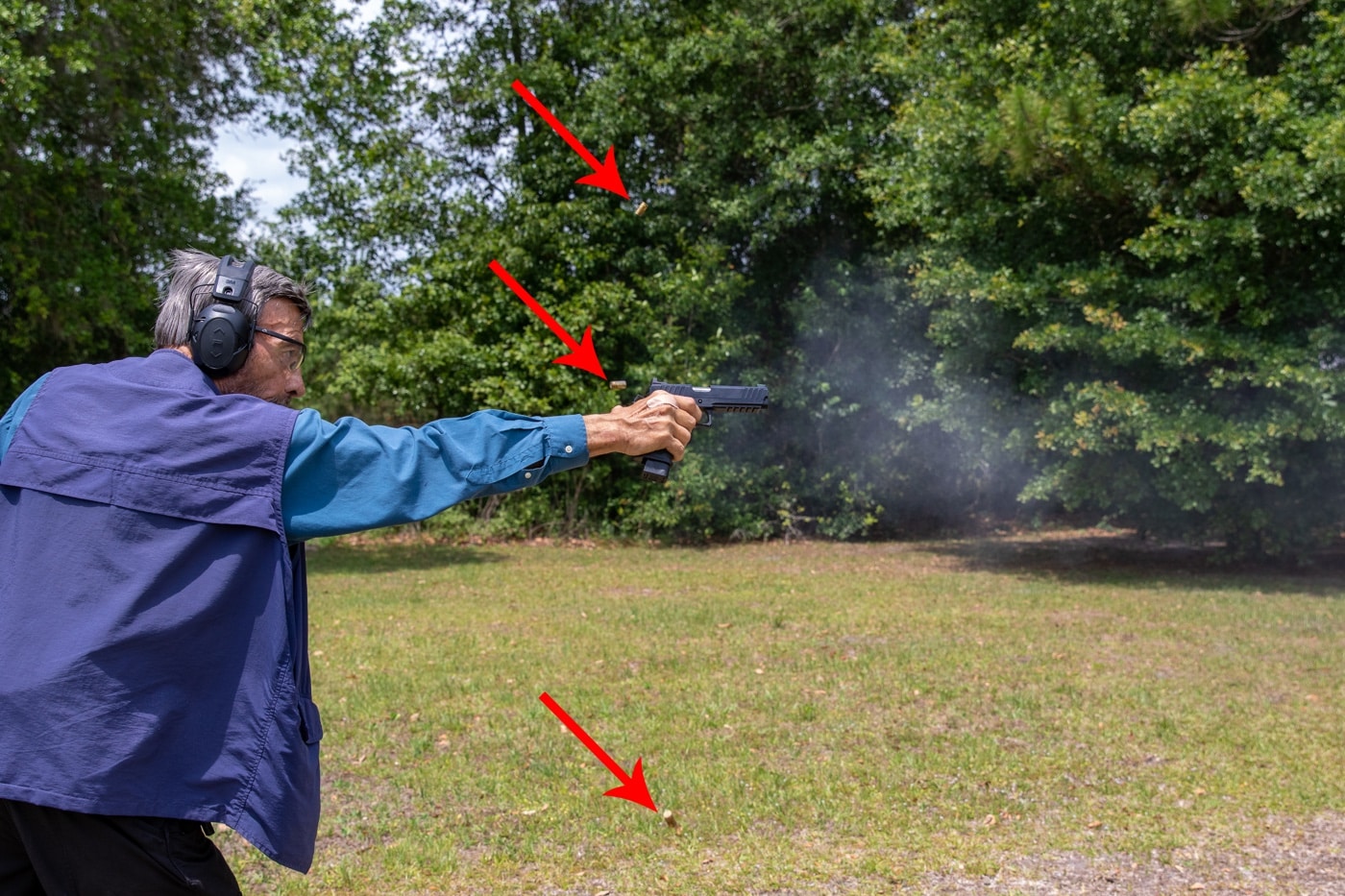
Nosler’s 124-gr. Match Grade JHP proved the point. All five shots were in a 3.10” group, but the best three were 1.35” apart. American Eagle 115-gr. FMJ was the pistol’s least favorite at 4.05” but still well within, say, the 8” maximum point value center circle of an IDPA target, and its best three measured a little more than half that, 2.45”. I’ve found Springfield Armory 9mms often group their best with 147-gr. subsonic, and this one ran true to that observation. Winchester’s 147-gr. jacketed truncated cone practice load gave the tightest 25-yard group of the test, 2.90” overall with the best three in 1.20”. That’s ample for any pistol match this old geezer is likely to enter these days.
But, the bench rest doesn’t tell the whole story. The ergonomics of a competition gun are best tested in…
Competition.
The Prodigy at a National Shoot
Richard Davis’ bowling pin tournament, known as The Second Chance Shoot from 1975 to 1998 and as The Pin Shoot since its resurrection in 2017, was presented for the 30th time this year. In the main events, five bowling pins have to be shot three feet back off a table while stopwatches are running. 9mm just didn’t move the heavy pins that far and Richard, seeing the growing popularity of the 9mm round among cops and armed citizens alike, introduced a side event for “nines” in which the pins only had to be knocked over. The current incarnation is known as “9X12” because there are a dozen pins instead of the original five. I thought this would be an excellent test for the Prodigy.
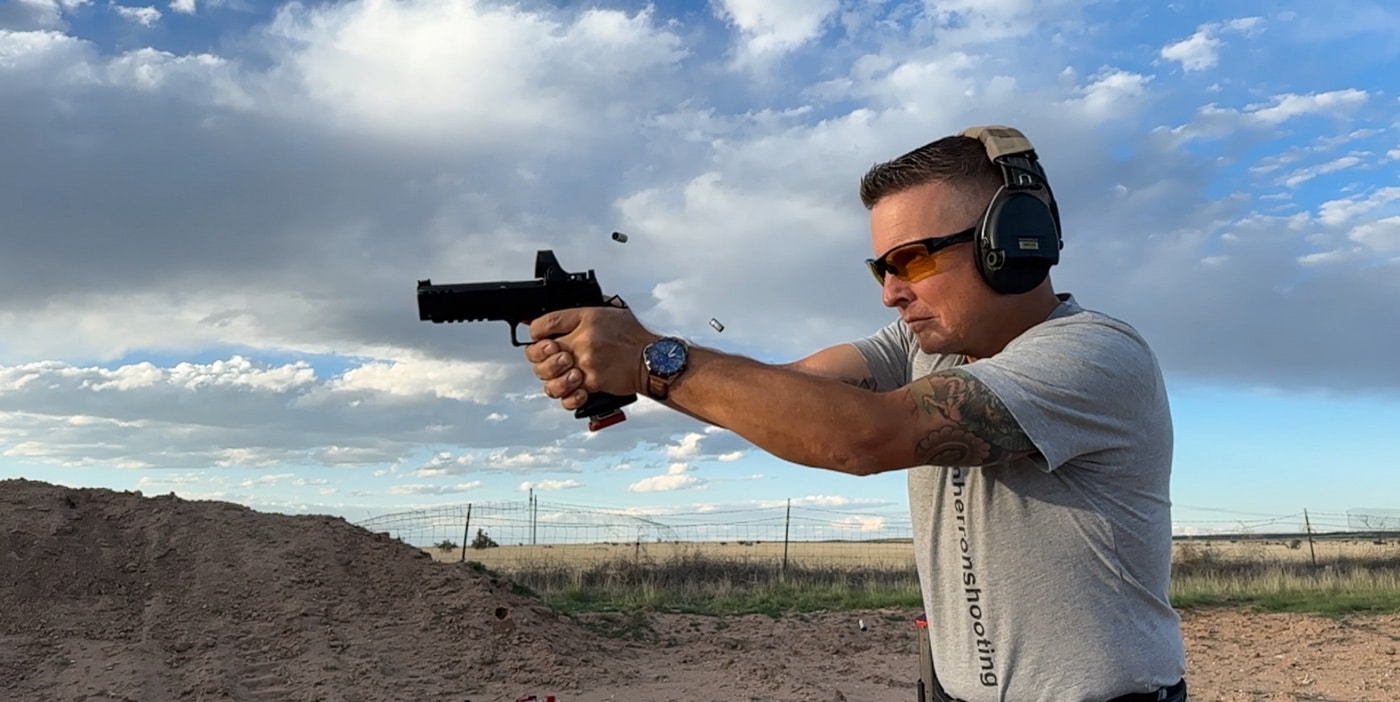
It gave me respectable times. I shot the 9X12 match again, for comparison, with a Springfield Armory XD-M. The Prodigy’s score was two-tenths of a second behind the XD-M’s for best time. One would think a 1911 trigger would beat that of a striker-fired gun, but the XD-M had received a competition trigger job from the Springfield Armory’s Custom Shop while the Prodigy was out of the box with a slightly heavier pull. From my perspective, I think the Prodigy did quite well.
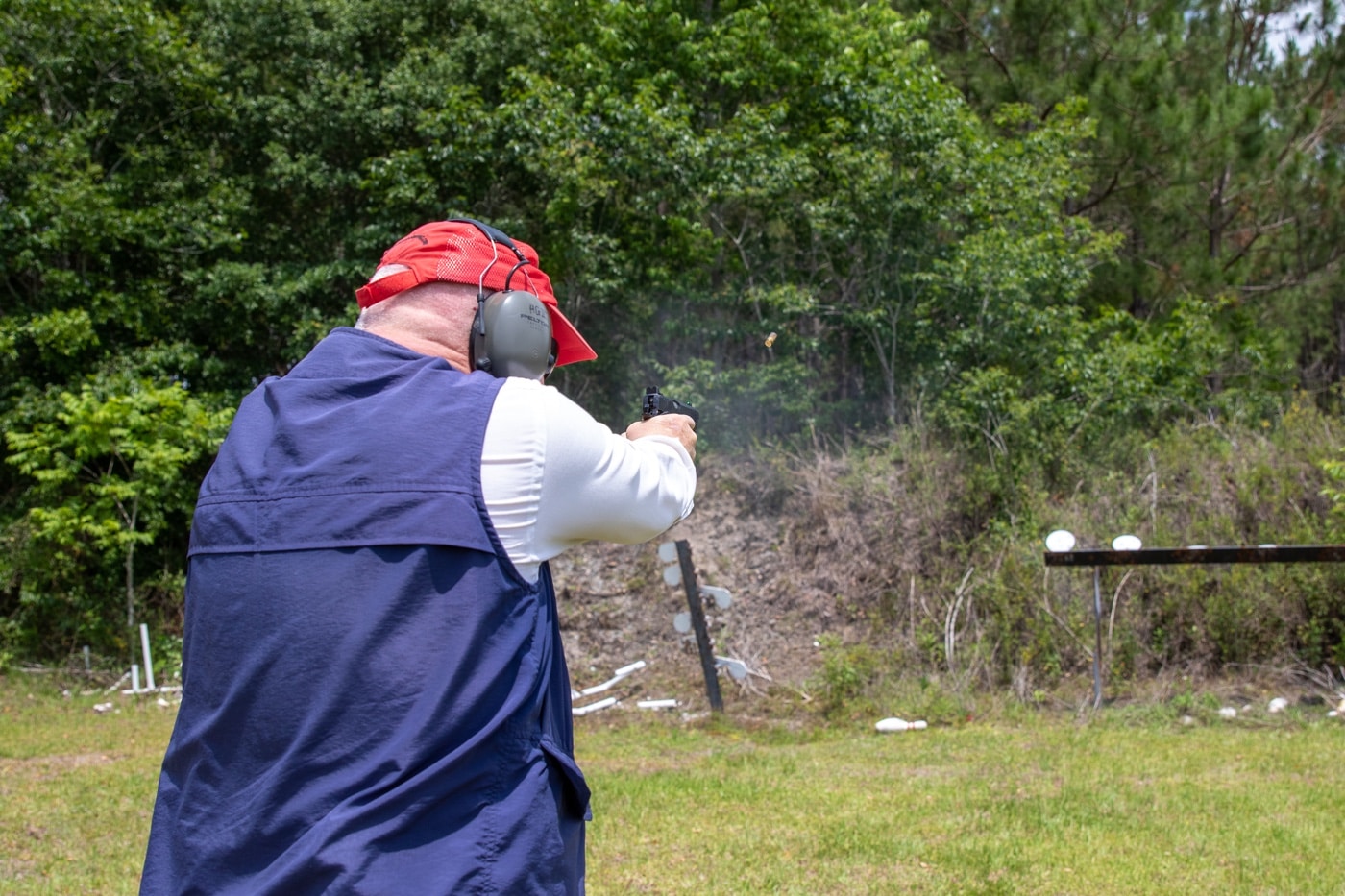
But I knew I had to look to better shooters than me, so I called Tim Herron, a professional shooter. He had bought a Prodigy and had tested it on the range first and then took the Prodigy to a couple of local USPSA speed shooting matches…
…and won them both.
Tim told me, “My Prodigy had a trigger pull of just under 4 pounds. I typically run 2.5 lbs. Accuracy has been good, and I’m very happy with it. It has been really good for a production gun for about $1,300. It holds 2-2.5” at 25 yards offhand with CCI Blazer, brass or aluminum, so accuracy is good. Mine has had a really good ejection pattern, with no failures of any kind at about 2,000 rounds through it.”
Conclusion
At my home base, I ran the Prodigy by several match-winning shooters: John Strayer, Allen Davis and Herman Gunter III. All liked the way it shot for them, and John flat stated his intention to buy one.
Clearly, the Prodigy is at home as a match gun. And for its reasonable price and what you get, it seems like it’s a real steal.
Editor’s Note: Please be sure to check out The Armory Life Forum, where you can comment about our daily articles, as well as just talk guns and gear. Click the “Go To Forum Thread” link below to jump in and discuss this article and much more!
Join the Discussion
Featured in this article
Continue Reading
Did you enjoy this article?

 100
100




